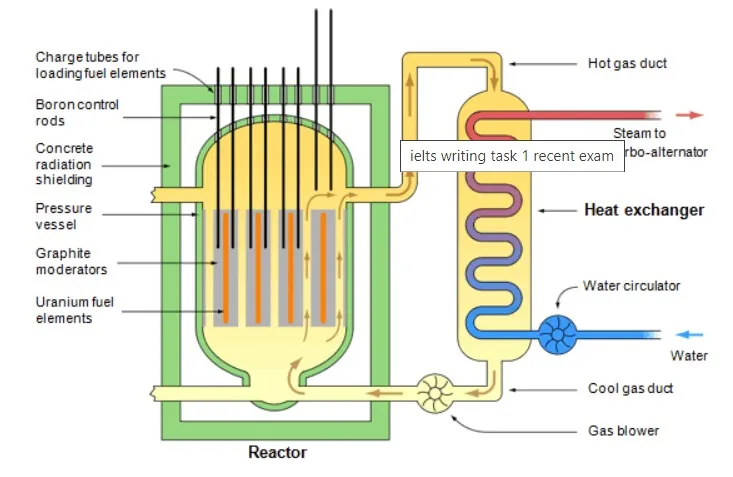The diagram below shows the production of steam using a gas-cooled nuclear reactor. Summarise the information by selecting and reporting the main features, and make comparisons where relevant.
The diagram illustrates the process of producing steam using a gas-cooled nuclear reactor. There are 2 main components in this nuclear reactor, one is a heat exchanger, and the other is the reactor.
As per the structure, the reactor is confined with concrete radiation shielding, which wraps pressure vessels. Inside the pressure vessel, graphite moderators are embedded in such a way that boron control rods are attached to it, and uranium fuel elements are placed inside the graphite moderators. To Insert fuel charge tubes are fitted on top of concrete shielding.
On the other side heat exchange involves a gas duct and water pipe embedded with a water circulator at the bottom of that pipe. So the process starts by ingesting cool gas to the reactor with the help of a gas blower constructed between the cool gas duct and reactor. Then the air is heated by the fuel inside the reactor and comes out through a hot gas duct.
The heat exchange takes place between hot gas and water in the tube, which turns into steam which is passed on to the turbo alternator.
Follow Us on IELTSFever Facebook
Also read: The Following Diagram Shows How Greenhouse Gases Trap Energy From the Sun
